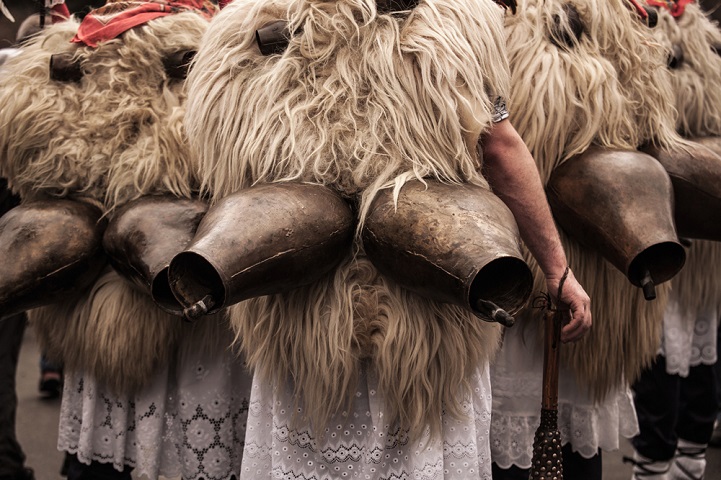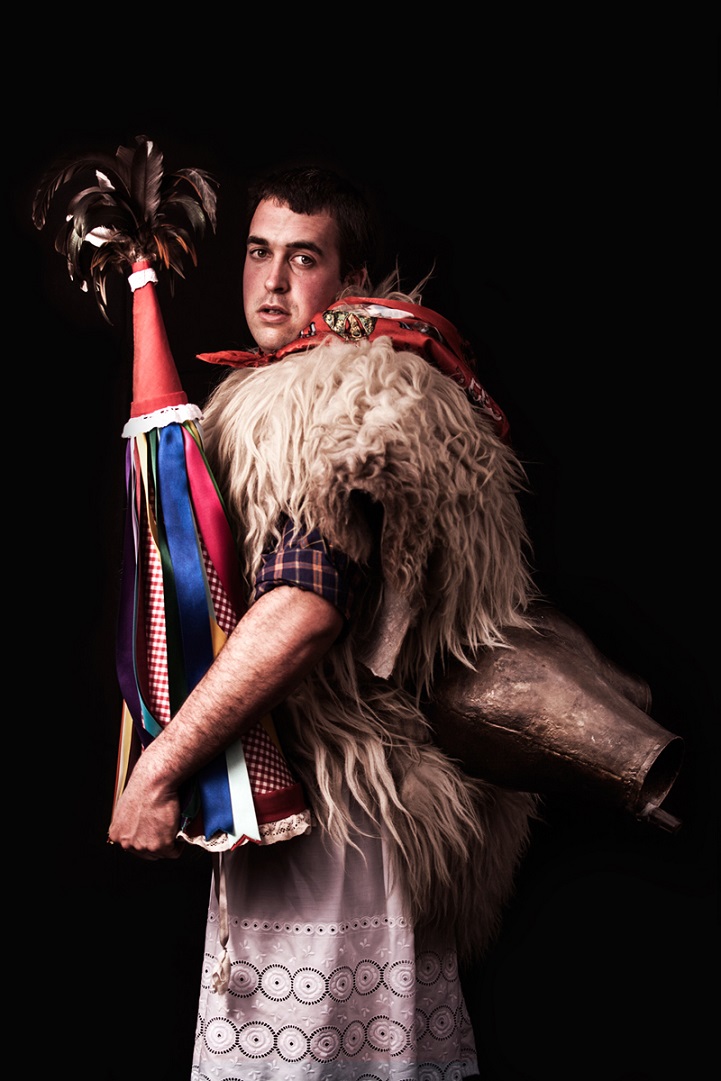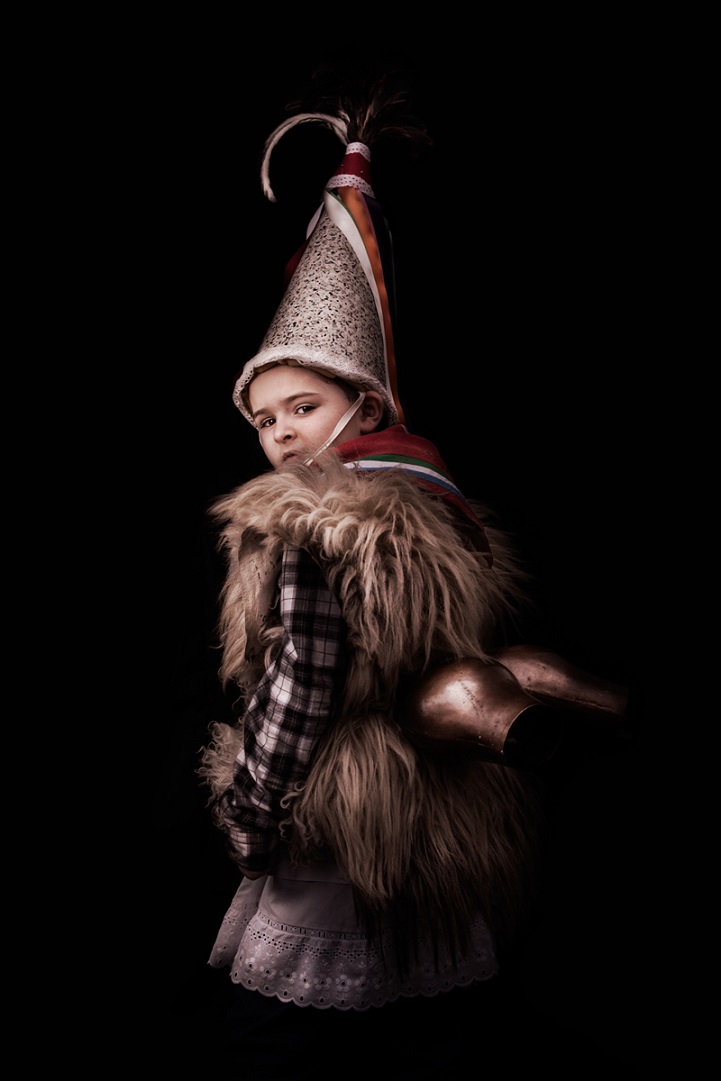
Diego Arroyo is a passionate photographer who travels the world in search of subtle human moments to capture through his lens. His most recent adventure took him deep into the valleys of Navarre Spain, to Ituren, Aurtitz and Zubieta–tiny towns that annually gather in splendid springtime celebrations that appear to be plucked straight from a folk tale. “Ancient traditions, witchcraft legends and a festive spirit mix together for a couple of days throughout this mysterious valley,” Arroyo told us in an email. These pagan carnivals allow the local Joaldunak villagers the opportunity to shake their cowbells, awakening the sleeping earth after a long winter and scaring off the spirits. Arroyo's vivid images shed a light on the inner workings of this traditional festival.
For the festivities, locals transform themselves using sheep skin waistcoats, leather sandals, white skirts, and neck kerchiefs, carrying scepters and donning colorful, pointed cone hats as they prepare to work their magic. They parade thunderously through the streets, hypnotically tolling their bells to call out to the earth to rise from its seasonal slumber, and the malevolent spirits to depart. The villages' geographic isolation has allowed these people to preserve a unique type of Carnival, one that is “deeply connected to nature and the magical world.”
The superstitious Carnival roots back to ancient rituals revolving around changing seasons and the cyclical triumph of life (spring) over death (winter). While other countries have similarly themed pagan celebrations, the Carnival of the Joaldunak remains particularly striking for its historic significance and ties to the unique cultural identity of the Ituren, Aurtitz and Zubieta, marked by the deafening rumble of cow bells and their distinctive garb. Arroyo's images respectfully document these traditional festivities, allowing one to indirectly participate in the springtime excitement.

“This very pagan celebration is rooted in witchcraft, enchanted forests, miraculous fountains (like the nearby San Juan Xar), and even Basajuans–savage lords of the woods who look like Yeti, covered in fur from the top of the head to the sole of the foot”

“The thunderous parade of dryly tolling cowbells hypnotises with its even rhythm, led by one of the Joalduna with short cries and a cow horn hanging around his neck that he blows sporadically.”








“For an outsider standing amongst them, this overwhelming feeling of community, this bond over a shared culture in an isolated place, leaves an even bigger impression than the be-ribboned tunturro hats. “


“Everyone plays a part in the festivities of winter's end, and every action seems imbued with hidden meaning.”



Diego Arroyo: Website | Facebook
All images via Diego Arroyo; captions and quotations by Jaime Dezcallar and translated by Elysia Brenner.






















































































